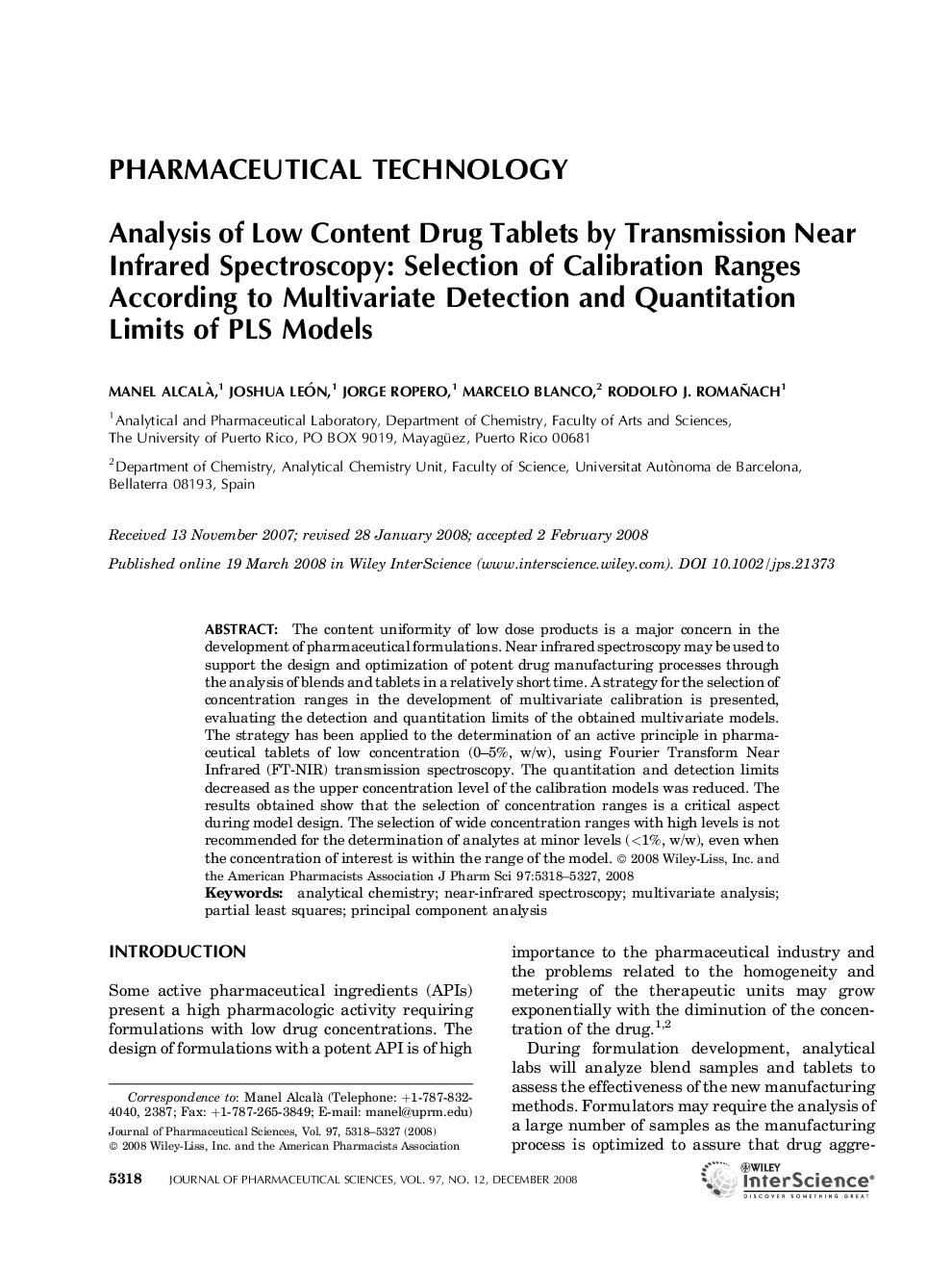| Article ID | Journal | Published Year | Pages | File Type |
|---|---|---|---|---|
| 2487411 | Journal of Pharmaceutical Sciences | 2008 | 10 Pages |
Abstract
The content uniformity of low dose products is a major concern in the development of pharmaceutical formulations. Near infrared spectroscopy may be used to support the design and optimization of potent drug manufacturing processes through the analysis of blends and tablets in a relatively short time. A strategy for the selection of concentration ranges in the development of multivariate calibration is presented, evaluating the detection and quantitation limits of the obtained multivariate models. The strategy has been applied to the determination of an active principle in pharmaceutical tablets of low concentration (0-5%, w/w), using Fourier Transform Near Infrared (FTâNIR) transmission spectroscopy. The quantitation and detection limits decreased as the upper concentration level of the calibration models was reduced. The results obtained show that the selection of concentration ranges is a critical aspect during model design. The selection of wide concentration ranges with high levels is not recommended for the determination of analytes at minor levels (<1%, w/w), even when the concentration of interest is within the range of the model. © 2008 WileyâLiss, Inc. and the American Pharmacists Association J Pharm Sci 97:5318-5327, 2008
Keywords
Related Topics
Health Sciences
Pharmacology, Toxicology and Pharmaceutical Science
Drug Discovery
Authors
Manel Alcalà , Joshua León, Jorge Ropero, Marcelo Blanco, Rodolfo J. Romañach,
